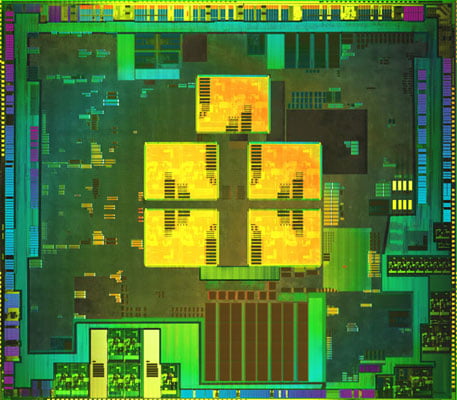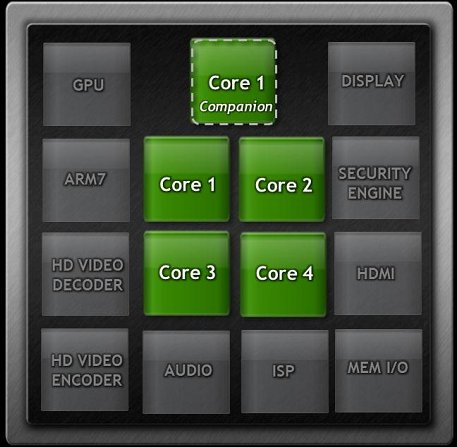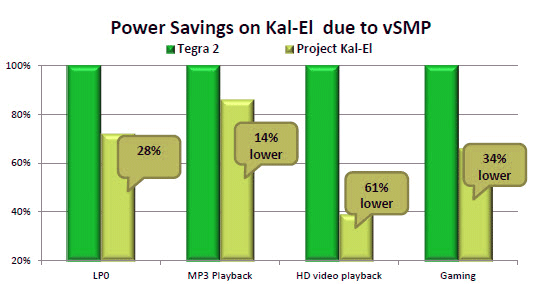Asus Eee Pad Transformer Prime, Tegra 3 Unleashed
Tegra 3 Under The Hood
There's little question that NVIDIA's new Tegra 3 low power quad-core SoC is one of the most impressive designs on the market today. Formerly known by the code name "Kal-El," at 1.3GHz stock speed, on paper it has significantly more processing resource and horsepower available versus Apple's dual-core A5. As you've probably heard by now, Tegra 3 is actually technically a 5-core processor with four primary execution cores and a 5th Cortex ARM9 companion core for low power light-duty workloads and power management. And if you consider that on-board Tegra 3 NVIDIA also couples a 12 core GPU in with the CPU complex, there are actually six primary processing engines in Tegra 3, though the design is actually far more complex with additional microengines as well.


As you can see, there are dedicated hardware resources on-board Tegra 3 for things like security processing, HD video encode/decode, audio and display outputs. What's perhaps more interesting, however, is that NVIDIA's Tegra 3 employs what the company calls "vSMP" or Variable Symmetric Multiprocessing. In short, Tegra 3 can not only shutdown unused microengines to minimize power consumption but it can also scale core speeds and engage inactive cores on the fly, depending on workloads and application requirements. For light-duty workloads like web browsing, video playback and book reading, only the companion core might be engaged. However kick into heavy multitasking or a gaming workload and all cores can become active up to 1.3GHz. Single and dual-core clock speeds can also boost to 1.4GHz if need be as well.
Here's a quick rundown on what NVIDIA claims Tegra 3 can save in terms of power consumption versus their previous generation Tegra 2 platform.
Here's a quick rundown on what NVIDIA claims Tegra 3 can save in terms of power consumption versus their previous generation Tegra 2 platform.

Source: NVIDIA Corp.
First, let's get our acronyms straight. LP0 stands for the lowest power state of each device. So, on the whole, the lowest power state of Tegra 3 is some 28% lower than the previous gen platform, yet offers a significant performance boost as you'll see in our benchmark numbers coming up. The most dramatic power consumption reduction is in the area of HD video playback, where NVIDIA claims Tegra 3 offers 61% lower power and efficiency versus Tegra 2. On a side note, both Tegra 2 and Tegra 3 are manufactured on TSMC's 40nm process technology, so NVIDIA achieved this efficiency in design and through innovation, rather than a process shrink. Tegra 3 is an impressive processor to say the least. If you'd like read more on vSMP, we'd suggest hitting this NVIDIA white paper.
Let's move on and fire up the Transformer Prime.
Let's move on and fire up the Transformer Prime.






